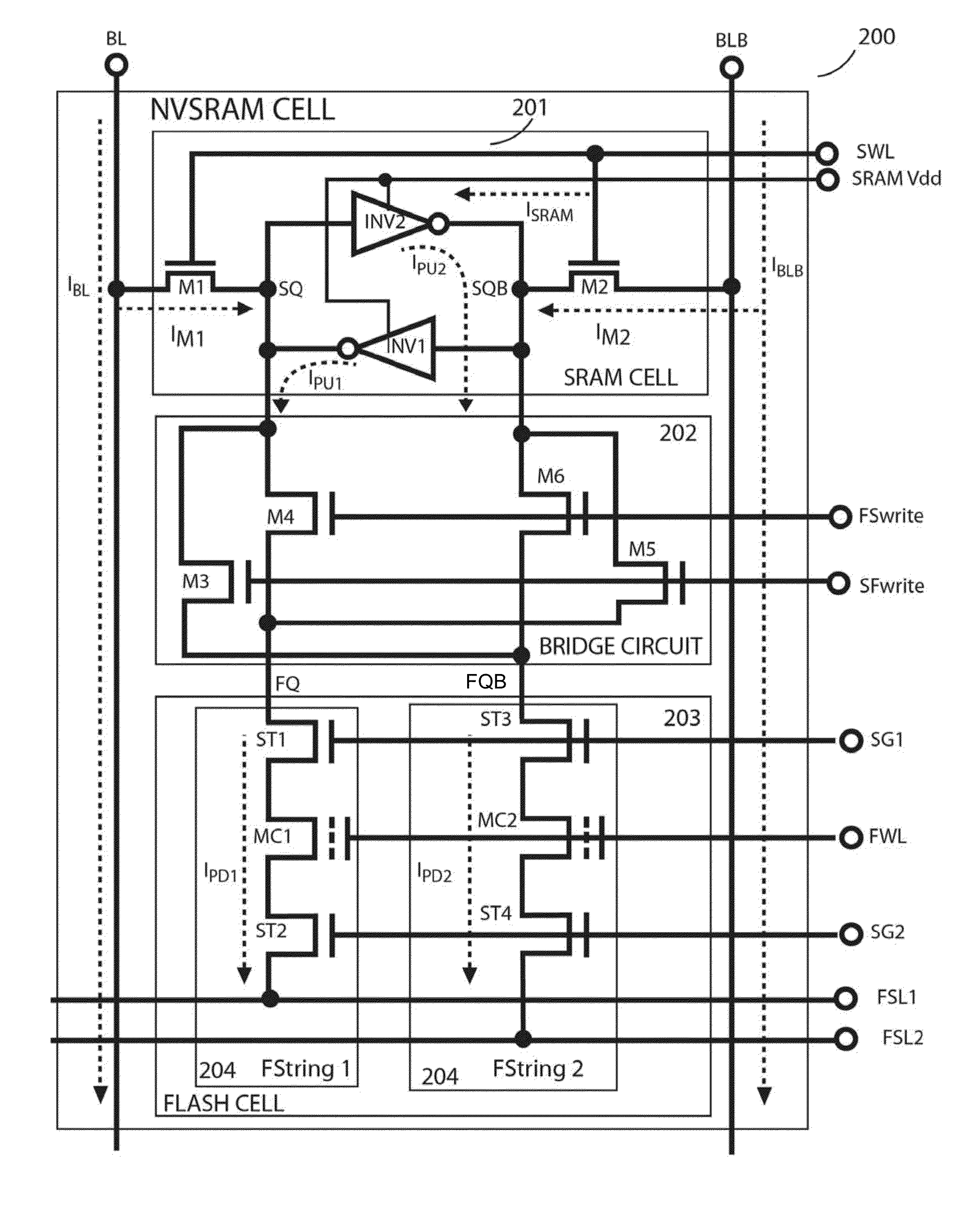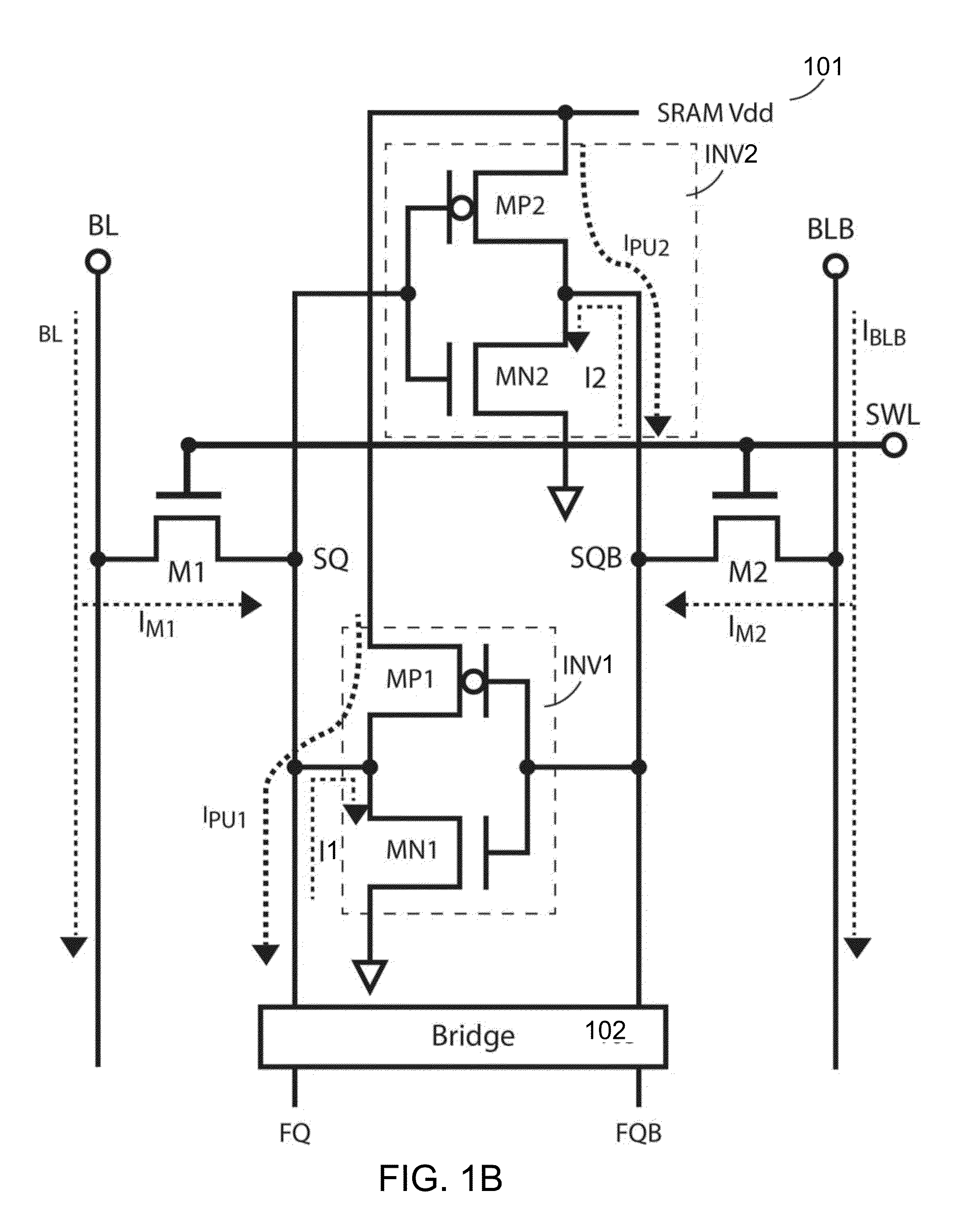Method and architecture for improving defect detectability, coupling area, and flexibility of nvsram cells and arrays
- Summary
- Abstract
- Description
- Claims
- Application Information
AI Technical Summary
Benefits of technology
Problems solved by technology
Method used
Image
Examples
case1
[0115] FSwrite for writing Flash Logic “0” state into SRAM.[0116]The operation of Case1 is illustrated with reference to DA1 explained above. There are two ways to write each Flash stored logic state into each SRAM. One way is to write each Flash cell logic data into each corresponding SRAM cell with the same polarity in Logic state by setting FSwrite=VDD and SFwrite=VSS. The other way is to write each Flash cell logic data into each corresponding SRAM cell with opposite polarity in Logic state by setting FSwrite=VSS and SFwrite=VDD. The FSwrite operation is under LV (low voltage VDD) operation. All related control signals of SG1, FWL, FSL1, FSL2 and SWL are all coupled to LV VDD.[0117]In application, FSwrite operation is performed upon a power-on period. For a LV operation like 1.2V VDD, this operation is preferably done after VDD stabilizes at 1.2V for more reliable operation. The SRAM data can be any logic state such as “0” or “1” before performing the FSwrite for this invention....
case2
[0121] FSwrite for writing Flash Logic “1” state into SRAM.[0122]Assume the paired Flash cells store the Logic “1” state, then MC1=Vt1 and MC2=Vt0 with the ΔVt=Vt1−Vt0. Under this “1” logic state along with a voltage of FWL higher than Vt0 and Vt1, then a current flow will happen on both FStrings with IPD1PD2 because VGS1 of MC1 is greater than VGS2 of MC2 where VGS1=VFWL−Vt0 and VGS2=VFWL−Vt1.[0123]But the current difference margin ΔI associated with IPD1PD2 can be secured for reliable setting by making resistor ResVDD a high-resistance as explained above. Thus the DA1 operation for the FSwrite for Logic “1” operation can be achieved reliably without a problem for LV operation even down to 1.2V VDD.
[0124]2) SFwrite operation:[0125]This operation is illustrated without reference to DA1, DA2 as explained above because for SFwrite operation, it does not involve any current flows between SRAM and Flash. It is the FN-tunneling effect happens to either MC1 or MC2 during SFwrite operation...
PUM
 Login to View More
Login to View More Abstract
Description
Claims
Application Information
 Login to View More
Login to View More - R&D
- Intellectual Property
- Life Sciences
- Materials
- Tech Scout
- Unparalleled Data Quality
- Higher Quality Content
- 60% Fewer Hallucinations
Browse by: Latest US Patents, China's latest patents, Technical Efficacy Thesaurus, Application Domain, Technology Topic, Popular Technical Reports.
© 2025 PatSnap. All rights reserved.Legal|Privacy policy|Modern Slavery Act Transparency Statement|Sitemap|About US| Contact US: help@patsnap.com



